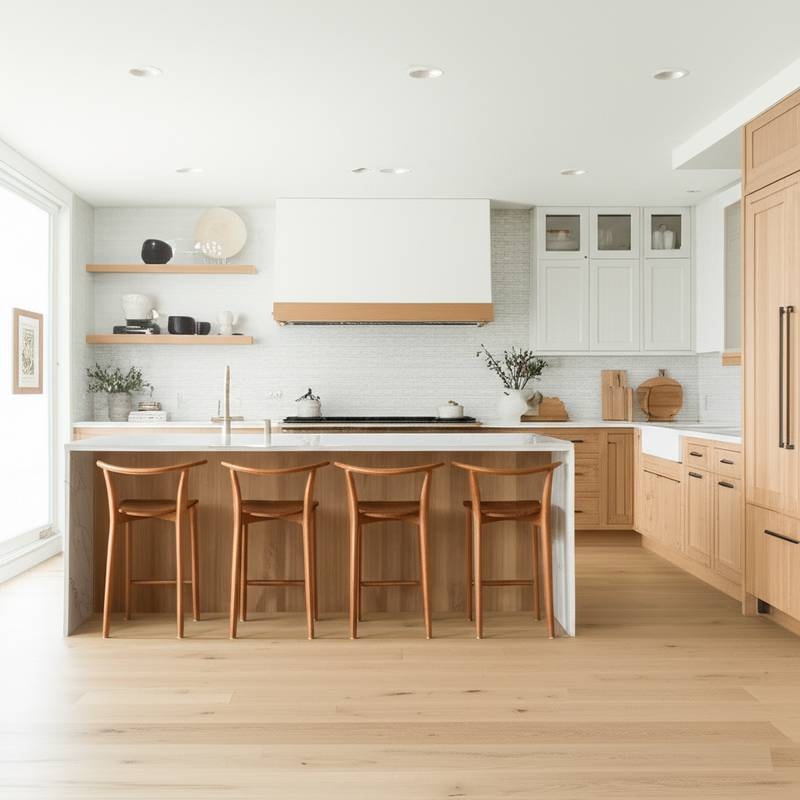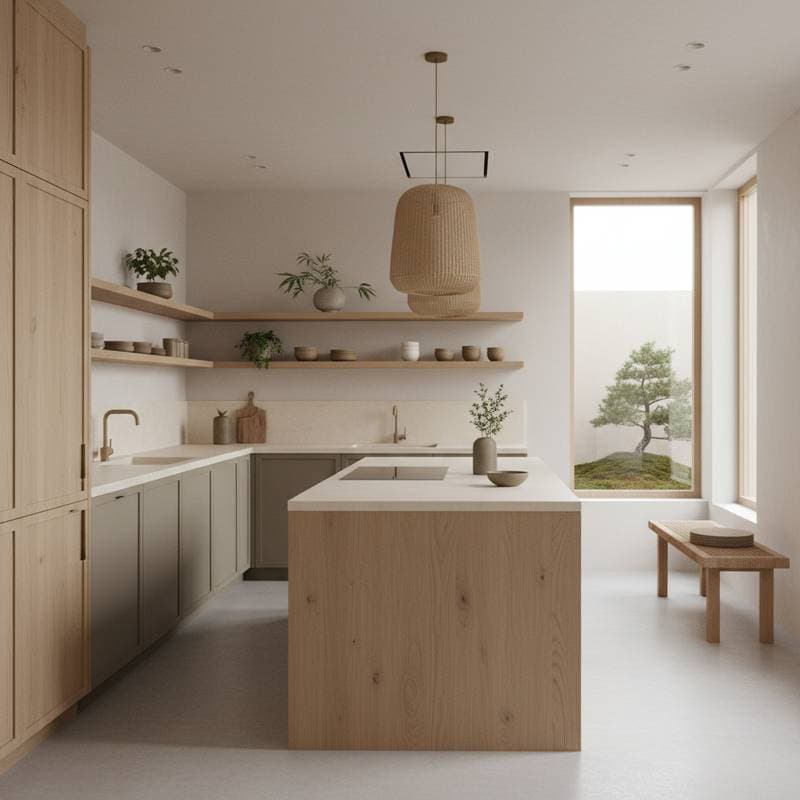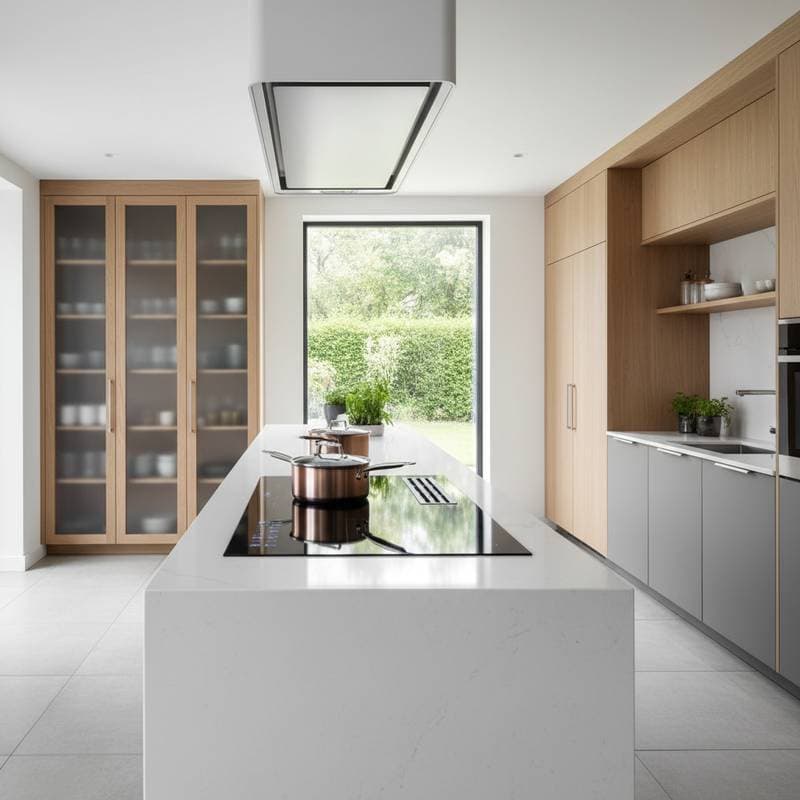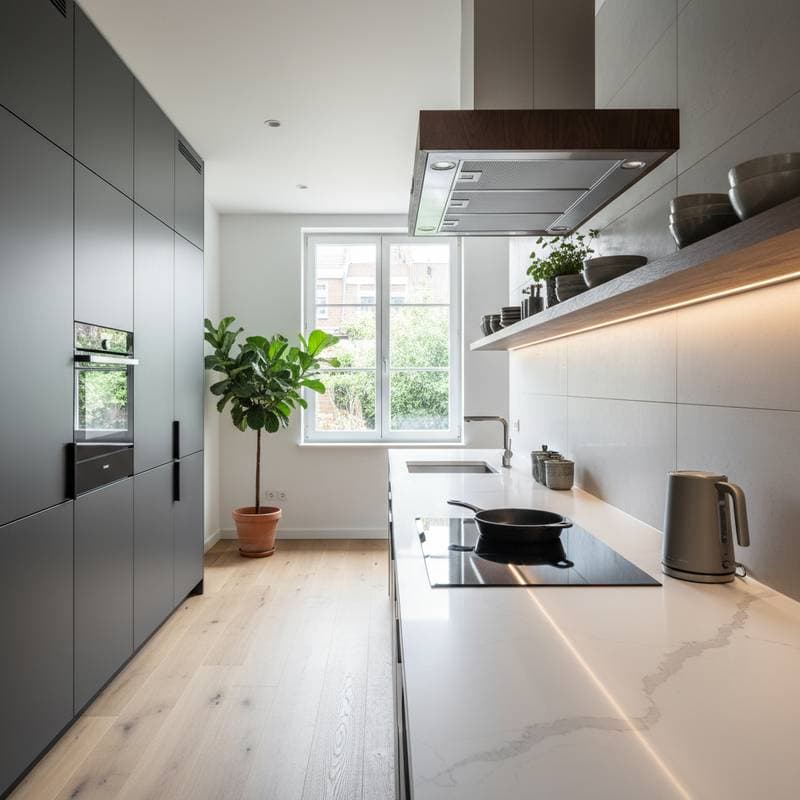The Shift from Stark White to Inviting Japandi
All-white interiors dominated modern design for years, offering crisp lines and unyielding purity. White walls, sleek marble surfaces, and neutral cabinetry represented ultimate restraint. However, as lifestyles prioritize comfort and connection, designers and homeowners turn toward warmer, more approachable aesthetics. Japandi emerges as this evolution, blending the disciplined simplicity of Japanese minimalism with the cozy functionality of Scandinavian design.
Japandi represents more than a trend; it signals a deeper alignment with human needs. Spaces move from clinical perfection to layered authenticity, where imperfections add character and calm prevails over sterility. Natural materials, soft lighting, and thoughtful details create environments that nurture well-being.
Subtle Color Palettes That Foster Serenity
Japandi employs a restrained color scheme to evoke tranquility without overwhelming the senses. Muted tones such as warm taupes, soft mushroom grays, and faded greens dominate, drawing from nature's palette. Designers select paints like Little Greene French Grey or Sherwin-Williams Accessible Beige to complement oak flooring and linen fabrics.
This approach highlights material qualities rather than bold contrasts. Walls in warm gray plaster pair seamlessly with ash veneer cabinetry and a travertine backsplash. Such tone-on-tone arrangements build depth through subtle harmony, resulting in minimalism that invites rather than intimidates.
Textures That Add Depth and Invitation
Texture transforms Japandi spaces from flat to engaging. Matte finishes replace glossy surfaces, while tactile elements encourage interaction. In kitchens, raked oak cabinetry, honed limestone counters, and satin brass hardware create a sensory experience.
Consider combining Fenix NTM matte laminate cabinets with a Caesarstone Primordia countertop. The natural grain of European oak or the uneven edges of handmade ceramic tiles introduces organic rhythm. These choices elevate everyday areas into havens of refined tactility.
Layered Lighting for Gentle Ambiance
Bright overhead lights often wash out all-white rooms, emphasizing their severity. Japandi counters this with diffused, multi-layered illumination that accentuates textures and warms the atmosphere. Paper lanterns, linen shades, and baked clay sconces, as used by lighting designer Ayumi Sato of Studio Hikari, produce a soft, enveloping glow.
The focus lies on shaping mood rather than uniform brightness. Warm LED bulbs at 2700K enhance wood grains and stone veining, fostering intimacy. This method ensures spaces feel alive and welcoming throughout the day.
The Value of Handcrafted Details
Japandi revives appreciation for artisanal work amid mass-produced uniformity. Handmade ceramics with varied glazes, woven textiles, and custom woodwork infuse personality into designs. Designer Mikael Sørensen of Atelier Nord commissions small-batch pottery, noting, “The imperfections create soul. You feel the hand behind the object.”
These elements bridge the gap between user and creator. A solid white oak dining table with exposed joinery or a bench in hand-dyed linen upholstery serves as more than functional pieces; they embody craftsmanship. Such details ground interiors in authenticity and emotional resonance.
Design That Mirrors Evolving Lifestyles
The transition to Japandi reflects wider changes in how people live. With increased time spent indoors, homes must support mindfulness, wellness, and balance. All-white minimalism once promised clarity, yet now comfort and relatability take precedence.
Japandi spaces encourage mindful routines, from preparing meals to quiet reflection. They celebrate simplicity without sacrificing warmth. Lifestyle writer Hannah Clarke shares her experience after renovating her kitchen: “My old white kitchen felt like a showroom. Now, with oak cabinets, matte limestone floors, and clay-colored walls, it finally feels like home.”
Crafting Your Own Japandi Haven
Japandi invites personalization through balanced, intentional choices. A kitchen in pale oak, a bedroom with linen layers and clay accents, or a living area with paper lights and ceramic touches all share grounded elegance. Begin by selecting one key material, such as oak or linen, and build layers around it.
This design philosophy evolves with its inhabitants, promoting ongoing appreciation for subtle beauty. The result is a home that sustains calm and connection, perfectly suited to modern demands.










